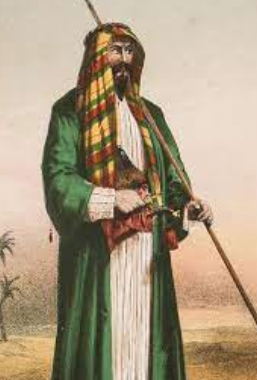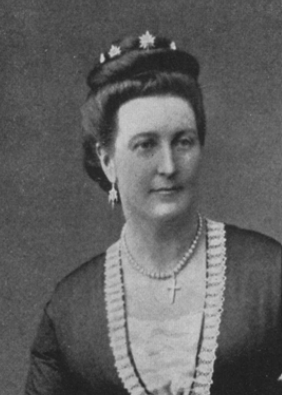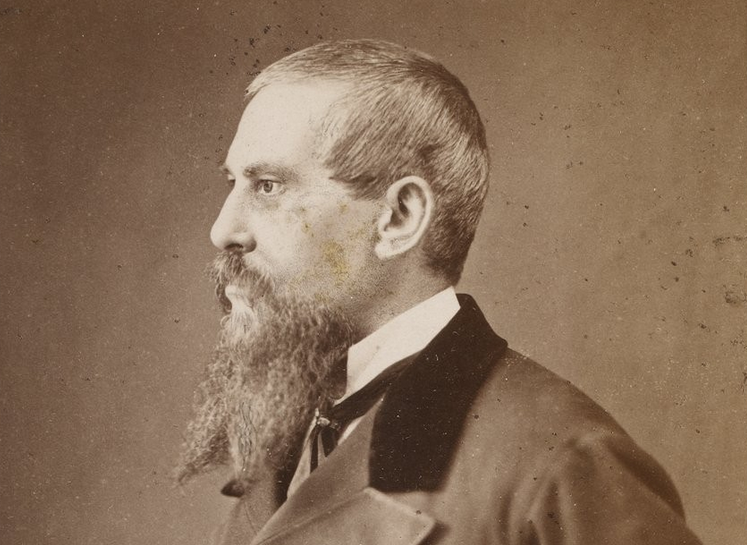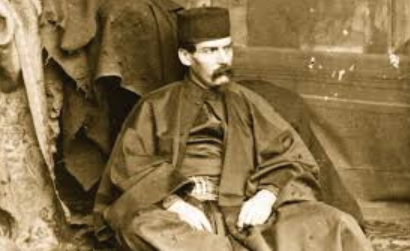
Ruffian Dick’s Pilgrimage to Mecca
In a time of turmoil in the Middle East, a thirty-one-year-old Englishman’s pilgrimage to Islam’s holiest shrine—Mecca’s House of Allah—disguised as a wandering Dervish doctor, is even more remarkable today than it was in 1853.
Infidel, n. In New York, one who does not believe in the Christian religion; in Constantinople, one who does. A kind of scoundrel imperfectly reverent of, and niggardly contributory to, divines, ecclesiastics, popes, parsons, canons, monks, mullahs, voodoos, presbyters, hierophants, prelates, abbés, nuns, missionaries, exhorters, deacons, friars, hadjis, high-priests, muezzins, Brahmins, medicine-men, confessors, eminences, elders, primates, pilgrims, prophets, etc. — [Ambrose Bierce, 1911, The Devil’s Dictionary]
Captain Sir Richard Francis Burton (1822–1890)—also known as “Ruffian Dick” and “the White Nigger”—was such a “scoundrel”. Irreverent of many things, he was neither British spy nor Muslim. He was driven by a prodigious curiosity, not geopolitics, to explore the hidden and forbidden—geographical, ethnological, erotological and spiritual.
This story first appeared in our December 2014 issue.
Full and instant access to our archives is
another good reason to subscribe
In the Folio Society edition of Burton’s three-volume Personal Narrative of a Pilgrimage to El-Medinah and Meccah, Tim Mackintosh-Smith describes him as having “one foot in the buccaneering age and the other in that of mass tourism”. The Personal Narrative (1855-56) was “the masterpiece of a misfit”, a “mixture of scholarship, slapdash and slapstick, of tedium, trivia and transcendence, of rhapsody and rant, prejudice and poetry”.
Misfit he was, but one with bravado, courage and erudition in equal measure. A keen observer, Burton documented virtually every facet of life he encountered, ferreting away scraps of paper in his kit. “Thou art always writing, O my brave!” remarked his Arabic teacher in Cairo. “What evil habit is this? Surely thou hast learned it in the lands of the Frank. Repent!” But he never did.
Why did he do it?
Thoroughly tired of “progress” and of “civilisation”; curious to see with my eyes what others are content to hear with ears, namely, Moslem inner life in a really Mohammedan country, and longing, if truth be told, to set foot on that mysterious spot which no vacation tourist has yet described, measured, sketched, and photographed, I resolved to resume my old character of a wandering Dervish, and to make the attempt.
Vacation-tourists avoided his chosen destinations for a good reason. Mohammed decreed them forbidden to unbelievers in 629. Many Christians and Jews had been impaled or crucified for their curiosity, at least two as late as 1845. While a change in official law gave an infidel “a choice  thrice offered between circumcision and death”, “an unofficial knife in the belly” remained the most likely outcome of discovery.
thrice offered between circumcision and death”, “an unofficial knife in the belly” remained the most likely outcome of discovery.
Nevertheless, Burton found the challenge irresistible. He perfected a Muslim persona so authentic it fooled at least two cultures, as well as his countrymen. “It is impossible to ignore the dear delights of fraud and deception,” he wrote in 1861, “the hourly pleasure taken by some minds in finessing through life, and in playing a part till by habit it becomes a nature.”
On returning to Cairo from Mecca, he could not resist testing it on English officers at Shepherd’s Hotel. Approaching a group smoking on a veranda, he strode by with the characteristic swagger of a Bedouin. His cloak brushed one of them.
“Damn that nigger’s impudence! If he does that again I’ll kick him.”
Wheeling around, Burton replied, “Well, damn it, Hawkins, that’s a nice way to welcome a fellow after two years’ absence.”
 “By God, Ruffian Dick!” replied the incredulous officer.
“By God, Ruffian Dick!” replied the incredulous officer.
Burton left Southampton on April 4, 1853, dressed as a “Persian Prince” (left). He spent a month in Alexandria refining his disguise; changing his title from “Mirza”—the Persian Mister—to “Shaykh” Abdullah, Servant of Allah, and acquiring the accoutrements and mannerisms of an Oriental “doctor”. There was, he wrote, “something infinitely seducing in the character of a magician, doctor and fakir, each admirable of itself, thus combined to make great medicine”:
It is not to be supposed that the people of Alexandria could look upon my phials and pill-boxes without a yearning for their contents. An Indian doctor, too, was a novelty to them; Franks they despised—but a man who had come so far from East to West!
Having been a “dabbler in medical and mystical study”, he claimed some knowledge of the trade. The “practice of physic” appeared to him comparatively easy, perhaps because cure ultimately depended on the Will of Allah:
I therefore considered myself as well qualified for the work as if I had taken a buono per l’estero diploma at Padua, and not more likely to do active harm than most of the regularly graduated young surgeons who “finish themselves” upon the sturdy frame of the British soldier.
One of Burton’s Cairo clients was an Arab slave-dealer whose Abyssinian girls constantly fell ill, especially with consumption, dysentery and varicose veins. So successful was he at curing them of the “pernicious and price-lowering habit of snoring”, he soon gained a “certain amount of reputation” and was, he said, “obliged to decline extending a practice which threatened me with fame”.
He arrived in Mecca for the annual Muslim Holy Week on Sunday 7 Zu’l Hijjah (September 11, 1853), after a two-month overland trip from the Red Sea port of Yambu, having visiting the Prophet’s Tomb at Medina en route. At dawn on the second day, he performed the Tawaf el-Kudum, or Circumambulation of Arrival. Entering the Prophet’s Mosque by the Bab el-Ziyadah, or principal northern door, he saw the Kaaba, the cuboid building at the centre of Islam’s most sacred mosque, Al-Masjid al-Haram:
There at last it lay, the bourn of my long and weary pilgrimage, realising the plans and hopes of many and many a year … The view was strange, unique—and how few have looked upon the celebrated shrine! I may truly say that, of all the worshippers who clung weeping to the curtain [Kiswah, an enormous black cloth embroidered in gold with verses from Koran], or who pressed their beating hearts to the stone, none felt for the moment a deeper emotion than did the Haji from the far-north [Burton]. It was as if the poetical legends of the Arab spoke truth, and that the waving wings of angels, not the sweet breeze of the morning, were agitating and swelling the black covering of the shrine. But, to confess humbling truth theirs was the high feeling of religious enthusiasm, mine was the ecstasy of gratified pride.
Burton finally entered the Kaaba on returning from nearby Mina, after a ritual known as El-Nafr, the Flight. Anxious to avoid standing bareheaded and barefooted in the midday sun, he cried, “Open a path for the Haji who would enter the House”—with such authority the crowd made way. Several officials questioned him about nationality and “other particulars”. While his replies were “satisfactory”:
looking at the windowless walls, the officials at the door, and the crowd of excited fanatics below—and the place of death, considering who I was—my feelings were of the trapped-rat description … Perspiration trickled in large drops, and I thought with horror what it must be when filled with a mass of furiously jostling and crushing fanatics.
Despite the risks, Burton sketched a rough floor plan with a pencil on his white Ihram while performing the traditional rituals and prayers; knowing that “nothing could preserve him from the ready knives of enraged fanatics if detected”.
With help from “six stalwart Meccans” he eventually reached the legendary Black Stone, when some Bedouin turned on him for being too pushy. But as they had no daggers and resembled “living mummies”, Burton wrote he “could have managed single-handed half a dozen of them”.
After thus reaching the stone, despite popular indignation testified by impatient shouts, we monopolised the use of it for at least ten minutes. Whilst kissing it and rubbing hands and forehead upon it I narrowly observed it, and came away persuaded that it is an aerolite [meteorite]. [Other visitors have described it as volcanic basalt.]
Next was a holy march to Mt Arafat, the Mountain of Mercy, a six-hour journey by camel in intolerable heat. Burton saw five men die and that night was forced to drive away grave-diggers who wanted to bury a “little heap of bodies” near his tent.
Then came the return to Mina and ritual hurling of forty-nine pebbles (stipulated to be no larger than a chickpea or lima bean)—carefully gathered and sorted at Muzdalifah—against three sacred pillars (Jimar or Jamarat)—in memory of Abraham who threw them at the Devil when his passage was barred at this very spot.
Another major ritual at Mina is the Feast of the Sacrifice, or what Burton called “Three Days of Drying Flesh”. Animal slaughter was on such a scale that the whole valley became “the dirtiest slaughter-house”. Many pilgrims just stood at their tents, “directed the victim’s face towards the Kaaba, cut its throat, ejaculating ‘Bismillah! Allahu Akbar!’”
Literally the land stank. Five or six thousand animals had been slain and cut up in this Devil’s punchbowl. I leave the reader to imagine the rest. The evil might be avoided by building abattoirs, or, more easily still, by digging long trenches, and by ordering all pilgrims to sacrifice in the same place.
During the next two days the Great, Middle and Little Satan pillars were again pelted, then, “bequeathing to the unfortunate inhabitants of Muna [Mina] the unburied and odorous remains of nearly 100,000 animals, we returned, 80,000 strong, to Meccah”. Leaving for Mecca was no easy task, as so many were “flying from the revolting scene”. “I could not think without pity,” he noted, “of those whom religious scruples detained another day and a half in this foul spot.”
Little wonder that Burton’s “prescient soul drew bad auguries for the future”. The number of animals slaughtered each year has increased with the surge in non-Saudi foreigners visiting Mecca for the Hajj—from 90,000 in 1927 to about two million today (2010).
A more recent pilgrim, Ezzedine Guellouz, then chief librarian at the National Library of Tunis, made this observation in his 1976 book Mecca: The Muslim Pilgrimage:
The full performance of the rites of the Hajj demand that animals be sacrificed [by every pilgrim]—giving alms of equal value is not permissible. In the year of my pilgrimage … nearly one and a half million animals were slaughtered. The authorities ensure that there is no risk of disease and plans are being made to find a solution to the problem of wasting the food.
Burton was also “wonder-struck” by the religious fervour of his fellow pilgrims. Late one evening he saw a “Negro in the state called Malbus—religious frenzy”, resembling a “chained and furious elephant, straining out the deepest groans”. Africans appeared to be especially susceptible:
To the ignorant and imaginative, it would at once suggest demoniacal possession … Often they are seen prostrate on the pavement, or clinging to the [Kiswah] curtain, or rubbing their foreheads upon the stones, weeping bitterly, and pouring forth the wildest ejaculations.
He witnessed a similar phenomenon in Medina while visiting the burial place of Fatima, Mohammed’s favourite daughter. Men were “weeping silently like children” then “shrieking like  hysterical girls and utterly careless to conceal a grief so coarse and grisly, at the same time so true and real, that I knew not how to behold it”.
hysterical girls and utterly careless to conceal a grief so coarse and grisly, at the same time so true and real, that I knew not how to behold it”.
Years later, while consul of Trieste (a position he occupied from 1872 to 1890), which was then a port of the Austro-Hungarian empire, Burton and his wife Isabel set up the Pilgrimage to Meccah Syndicate Ltd. Formed to offer pilgrim-package tours, it never got off the ground. Burton’s book was surely one reason for the failure. Would a genuine pilgrim go on a tour arranged by a self-confessed infidel? And what infidel would want to repeat his adventure after reading this reassuring paragraph?
In penning these lines I am anxious to encourage other Englishmen, especially those from India, to perform the pilgrimage, without being deterred by exaggerated reports concerning the perils of the enterprise. It must, however, be understood that it is absolutely indispensable to be a Mussulman [Muslim] (at least externally) and to have an Arabic name. Neither the Koran nor the Sultan enjoins the killing of intrusive Jews or Christians; nevertheless, two years ago, an incognito Jew, who refused to repeat the creed, was crucified by the Meccah populace; and in the event of a pilgrim again declaring he was an unbeliever, the authorities would be almost powerless to protect his life.
But if one was “sufficiently conversant with the prayers, formulas and customs of the Mussulmans”, with a “sufficient guarantee of orthodoxy”, the trip would be as safe as a walk in the park. Such pilgrims would “apprehend no danger” if they applied through the British Consulate at Cairo for an introduction to Amirul Haj, Prince of the Caravan.
Coincidentally, inside my copy of Pilgrimage was a photocopy of an article by Bernard Levin from the Times in April 1993: “The faithful fall in a new age of hatred—a wave of crucifixions in Muslim lands suggests the tide of religious enlightenment has turned.” Levin wrote it two decades ago, but might have done so yesterday. His conclusion:
The uprising of Islamic fundamentalism is one of the most dangerous, implacable and tyrannical movements in the post-war world. There is an irony in the situation, because the rulers of most Islamic nations are just as frightened of the fanatics as are the infidels, and find themselves in a struggle between their civilised Islamic religion and the dreadful, hate-filled form in which the extreme fundamentalists revel.
Burton’s fate may have been sealed when he left Trinity College, Oxford, degreeless, tooting on a tin trumpet while (allegedly) driving a dog-cart over its sacred flower beds. As for the fate of the Christian West (and any group deemed heretics or devil-worshippers), for some it was sealed about 1400 years ago. But what kind of divinity would sanctify the murderous actions of today’s jihadists—either in this or another world? Levin again:
Clocks are constantly being put back, but time goes only forward; I really do not believe that there has been such a reversal of progress throughout the world since the last Ice Age. The problem is that Muslim fundamentalism, and a great deal of moderate Muslim practice, refuses to believe that other religions may cohabit in this world; Islam, and only Islam, may build places of worship, proselytise, preach, pray, believe … I do not know how we shall contain, or turn, this hideous tide of bloodstained bigotry, but I know it must be done. We thought that the Wars of Religion were in the far distant past. How wrong we were.
If Levin is right, part of what is happening in the Middle East—sectarian conflict, brutal elimination of other creeds, beheadings, crucifixions—is more than a temporary aberration, or “toxic distortion of religion” that has produced a “death cult”. It is a sign of deeper antipathy, of irrational prejudice towards “unbelievers” that has been around for centuries. If so, the rhetoric of terrorism will be unable to explain away its genesis for long.
Before the ink was dry on Pilgrimage, Burton was planning to visit another forbidden city—Harar, the religious capital of Somaliland—this time disguised as a Muslim merchant. But that is another story. As for religion, in volume ten of his translation of Arabian Nights, he wrote: “The more I studied it, the more I am convinced that man never worshipped anything but himself.”
Michael Kile is a frequent contributor to Quadrant and Quadrant Online
Madam: Archbishop Fisher (July-August 2024) does not resist the attacks on his church by the political, social or scientific atheists and those who insist on not being told what to do.
Aug 29 2024
6 mins
To claim Aborigines have the world's oldest continuous culture is to misunderstand the meaning of culture, which continuously changes over time and location. For a culture not to change over time would be a reproach and certainly not a cause for celebration, for it would indicate that there had been no capacity to adapt. Clearly this has not been the case
Aug 20 2024
23 mins
A friend and longtime supporter of Quadrant, Clive James sent us a poem in 2010, which we published in our December issue. Like the Taronga Park Aquarium he recalls in its 'mocked-up sandstone cave' it's not to be forgotten
Aug 16 2024
2 mins









